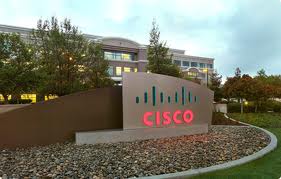In today’s digital world, the networking industry plays a crucial role in connecting devices and facilitating communication. From businesses to individuals, reliable and efficient networking solutions are vital for seamless connectivity and data transfer.
As an investor or someone interested in learning about investing, it’s important to understand the competitive landscape of this industry and the key players shaping its future.
Cisco Systems: A Leader in Networking Solutions
Cisco Systems is a renowned leader in the networking industry, offering innovative solutions that have revolutionized how organizations connect and collaborate. With a comprehensive range of products, including routers, switches, and security solutions, Cisco caters to diverse needs across businesses of all sizes.
What sets Cisco apart is its commitment to research and development, driving them to introduce cutting-edge technologies like software-defined networking (SDN) and intent-based networking (IBN). These advancements enhance network performance while providing flexibility and scalability.
Cisco’s success can also be attributed to their customer-centric approach. They prioritize understanding customer requirements and offer excellent support throughout the entire product lifecycle. Strategic partnerships with industry leaders further strengthen their position as a trusted provider of end-to-end networking solutions.
In summary, Cisco Systems’ rich history, extensive experience, innovative products, focus on research and development, customer-centric approach, and strategic partnerships have positioned them as a leader in networking solutions.
Emerging Challengers: Competitors Disrupting the Networking Market
The networking market, long dominated by industry giant Cisco Systems, is experiencing a shake-up as emerging players challenge their position. These competitors bring unique offerings and innovative strategies that are disrupting the traditional networking landscape.
One such challenger making waves is Juniper Networks, a company based in Sunnyvale, California. Juniper has gained recognition for its forward-thinking approach to networking solutions.
Their focus on delivering high-performance routing platforms tailored specifically to the needs of service providers sets them apart from Cisco and allows them to carve out their own niche in the market.
Another disruptor in the field is Arista Networks, headquartered in Silicon Valley. Arista has captured attention by revolutionizing networking through cutting-edge technologies like cloud networking and software-defined networking (SDN).
By placing emphasis on open standards and interoperability, they have resonated with customers seeking flexible and scalable solutions.
Huawei Technologies, a major global player from China, is also making significant strides in the networking industry. With competitive pricing and scalability as their key strengths, Huawei offers an attractive alternative to Cisco’s offerings. However, geopolitical concerns have posed challenges to Huawei’s growth potential in certain markets.
As these emerging challengers continue to innovate and disrupt the status quo, it becomes crucial for established players like Cisco Systems to adapt and evolve accordingly. The competition not only drives advancements in technology but also provides customers with more choices and alternatives when it comes to their networking needs.
In summary, the emergence of these challengers signifies a shift in the networking market dynamics.
Juniper Networks’ specialization for service providers, Arista Networks’ focus on cutting-edge technologies like cloud networking and SDN, and Huawei Technologies’ competitive pricing all contribute to an increasingly competitive environment for Cisco Systems.
This disruption ultimately benefits customers by promoting innovation and expanding options within the industry.
HPE/Aruba: Convergence of Data Centers and Networking Solutions
The collaboration between Hewlett Packard Enterprise (HPE) and Aruba Networks brings together the strengths of data centers and networking solutions. This integration allows businesses to simplify management, improve efficiency, and enhance security.
By combining HPE’s infrastructure solutions with Aruba’s networking portfolio, companies can achieve better scalability, flexibility, and performance across their IT ecosystem. The joint offering delivers comprehensive technology solutions that address the evolving needs of modern enterprises in a seamless and secure manner.
Dell Technologies: Expanding with Comprehensive Networking Solutions
Dell Technologies has transformed into a leading comprehensive technology provider, offering not just computers but also a wide range of networking solutions. Through its subsidiary, Dell EMC, the company seamlessly integrates networking products into their infrastructure solutions, creating a cohesive technology ecosystem for customers.
With a focus on innovation and customer-centricity, Dell Technologies delivers scalable and secure networking options that meet the evolving needs of businesses. By leveraging open standards and ensuring interoperability, they provide efficient and compatible networking solutions that optimize technology investments.
As businesses navigate the digital landscape, Dell Technologies empowers them with end-to-end technology solutions for connectivity and growth.
Cisco’s Response: Strategies to Maintain Market Leadership
To maintain its market leadership, Cisco prioritizes innovation across hardware, software, and services. They invest heavily in research and development, focusing on emerging technologies like AI, ML, and automation to enhance network intelligence and security.
Embracing a software-centric approach through initiatives like SDN enables greater flexibility and scalability. Additionally, Cisco collaborates with industry partners to create comprehensive solutions that address customer challenges. Their customer-centric approach and extensive support services contribute to long-term customer success.
In summary, Cisco’s strategies for maintaining market leadership involve continuous innovation, investment in emerging technologies, software-centric networking solutions, collaboration with partners, and a focus on customer needs.
Conclusion: The Future Landscape of Networking
[lyte id=’b7jK7OwtpvE’]





